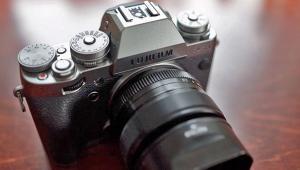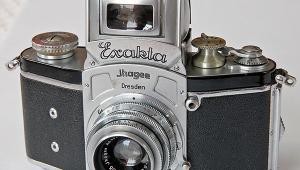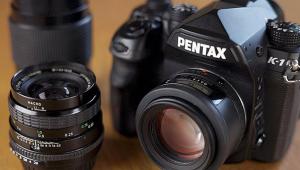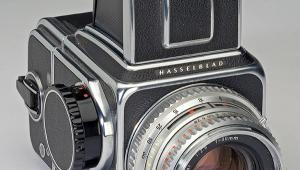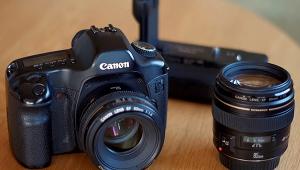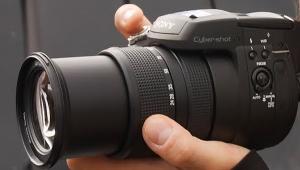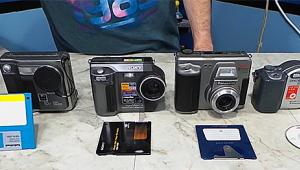The Minolta CLE; Precision Engineering From The Japan-Germany Camera Company
The inside joke at Minolta was that the “CL” in Leica CL stood for “Cheap Leica.” Surely owners of Leica M4s and M5s felt the same way—even though it wasn’t true. But no one ever joked about the Minolta CLE. It’s an absolute jewel of a camera that uses Leica M-mount lenses and delivers incredibly sharp images.
Officially, Minolta referred to the CLE as “the world’s first rangefinder camera with interchangeable lenses and TTL automatic and manual exposure systems.” That’s what it says in the first paragraph of the 46-page Owners Manual. The next paragraph goes on to say that “The patented Minolta TTL off-the-film metering system forms the heart of the CLE’s aperture-priority automation and provides exceptional exposure accuracy.
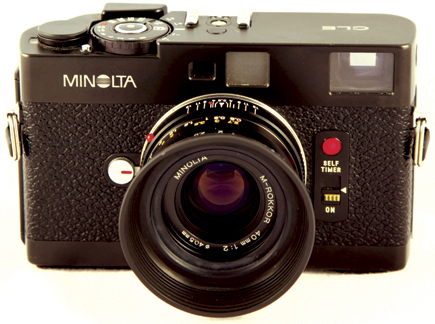 |
 |
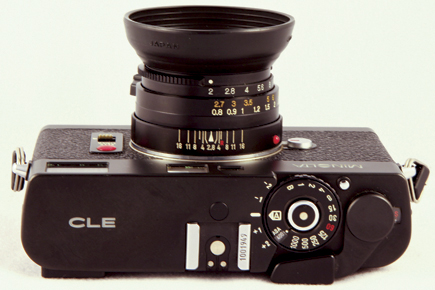 |
“Features such as the exclusive Touch Switch/shutter release that activates the meter and the finder’s LED shutter-speed display makes (sic) taking photographs with the CLE fast and easy, and frees you for greater enjoyment and creativity.”
Another way to describe the Minolta CLE would be to call it the prodigal offspring born of the brief romance between two giants of the camera industry.
Minolta Camera Company, Ltd. of Osaka, Japan, and Ernst Leitz, GmBH of Wetzlar, Germany, entered into a “technology cooperation” agreement in June of 1972. One year later the first fruits of the collaboration appeared in the form of the Leica CL. Minolta’s affinity for German technology began much earlier than that, however. Minolta’s founder, Kazuo Tashima (who was still at the helm when the Leica connection was forged) traveled extensively in Europe during his youth. In 1928 he started a precision manufacturing company called Nichi-Doku Shashinki Shoten which literally translated means “Japan-Germany Camera Company.” Later this company was renamed Minolta Camera Co., Ltd.
The camera market was rapidly evolving during the 1970s, and every camera maker was looking for ways to cash in on America’s newfound love of 35mm photography. Minolta was the first of the “Big Five” camera manufacturers to shed second-level distributors when they began direct-to-dealer sales in 1969. Canon dumped Bell & Howell shortly thereafter. Eventually, Nikon and EPOI parted ways, Pentax left Honeywell, and Olympus split from Ponder & Best. Eliminating the middlemen meant that the camera makers enjoyed increased profits—much of which they plowed into advertising and product development. More importantly, direct distribution meant that the camera companies themselves were providing service and technical support, and were in complete control of marketing their brands.
 |
In 1975 Minolta introduced the EG101—the world’s first photo copier to use the latent image transfer method. That’s the year I joined the company, selling SR-T 101s in the Chicago market. A couple of years later the Leica R3 appeared as well as the venerated Minolta XD-11. Both products benefited from the Leica-Minolta connection. To celebrate the 50th anniversary of the brand, Minolta Corporation (the U.S.A.-based sales organization) took the entire sales force to Japan in 1978. I was on that trip, and I recall spying a pallet of boxes marked with the Leica logo. I asked about them, of course, and moments later they were covered with an opaque plastic tarpaulin. The point is that Minolta went to great pains to keep their role in Leica camera manufacturing anonymous.
In 1981 the Minolta CLE 35mm rangefinder camera appeared in the US. Although similar in size and configuration to the Leica CL, the CLE is superior in many ways. In addition to offering automatic aperture-priority exposure and TTL off-film-plane metering, it features improved focusing accuracy thanks to a slightly longer rangefinder base.
An assortment of dedicated accessories was introduced simultaneously with the CLE, and all are highly prized by collectors. At the core was a trio of Rokkor lenses: a 28mm f/2.8, a 40mm f/2, and a 90mm f/4. An accessory flash unit, the Auto Electroflash CLE, has a cleverly engineered, built-in wide-angle diffuser that’s spring-loaded to snap firmly out of the way when not needed. Flash sync is 1⁄60 sec, and it’s possible to use any Minolta AE flash on a CLE. They also offered a highly functional mini-tripod, the TR-1, various 40.5mm screw-in filters, and several different genuine leather cases.
The patented TTL off-film-plane metering utilized a unique reflective pattern that was printed on the shutter curtain. Amazingly, the physical material on my CLE’s shutter has endured throughout the years despite the torque, flexing, and shock that occur with each exposure. The ASA range is from 25-1600. The Minolta CLE operates effectively from 3 EV through 18 EV (f/2 at 2 seconds down to f/16 at 1⁄1000 sec). Shutter speed ranges from 1 full second to 1⁄1000 sec,
plus Bulb.
 |
Camera Operation
Slide open the battery compartment on the camera’s baseplate and insert a pair of fresh S76 or equivalent batteries. When the batteries die, so does the camera—that’s the main criticism of this model. Minolta designed an awkwardly located main power switch in an attempt to prevent accidental battery drain, but in reality the switch is so inconvenient to use that most people ignore it entirely. The main power switch is located on the front of the camera below the self-timer lamp. Set it to the On (bottom) position by pushing the gray lug toward the lens with your thumb as you move the switch downward.
Open the camera back by raising the rewind crank, lifting the rewind knob, and rotating the rewind knob counterclockwise (as indicated by the arrow). Drop in a 35mm film cassette and carefully loop the tip into the take-up spool. Ratchet the film advance lever a couple of times before closing the back. Set the ASA (that’s ISO to you youngsters) by raising the outer ring of the shutter speed dial and turning it until the right number appears in the small window.
The most difficult part of using a Minolta CLE is making sure the film catches when you load. Over the years I’ve found it easiest to insert the film leader before dropping the cassette into the chamber, a technique that may not work for everyone. On the camera back you’ll find a framed ASA to DIN conversion chart that doubles as a film box top holder.
Taking a picture is simple, even if you’ve never used a film camera before. Set the shutter speed dial to A (it will lock) and select an aperture by rotating the aperture ring on the lens barrel. Turn the camera on by lightly touching the shutter release button—it’s not necessary to apply pressure, just make contact. If you’re wearing gloves, remove them—the touch switch won’t work if your skin is insulated.
Hold the camera at eye level and focus by adjusting the focus lever on the lens barrel. Simply align the split images in the yellow center area of the viewfinder until they are superimposed. You’ll find that the viewfinder is incredibly bright, and on the left side you’ll see a red LED next to the shutter speed that the camera is selecting. Gently press the shutter release button all the way down to take a picture.
Make note of the sound the shutter makes. It’s a rich mechanical sound that is so recognizable that Minolta used recordings of it to give digital cameras a realistic voice 20 years later. That’s right—the synthetic shutter sound uttered by certain Minolta digital cameras was cloned from the CLE’s DNA. But that’s a story for another classic camera tale. In excellent condition, a Minolta CLE 40mm f/2 lens is worth approximately $750.
